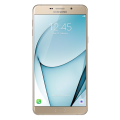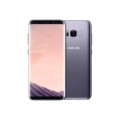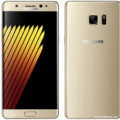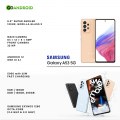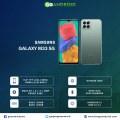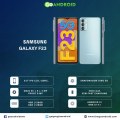Samsung Galaxy S4 Zoom
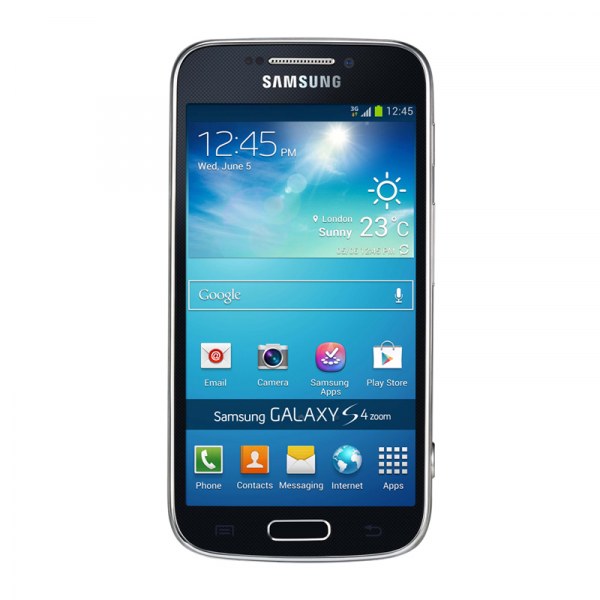

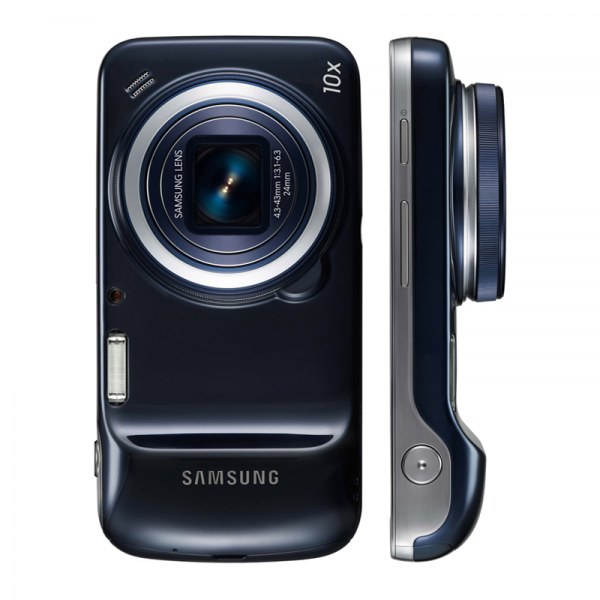
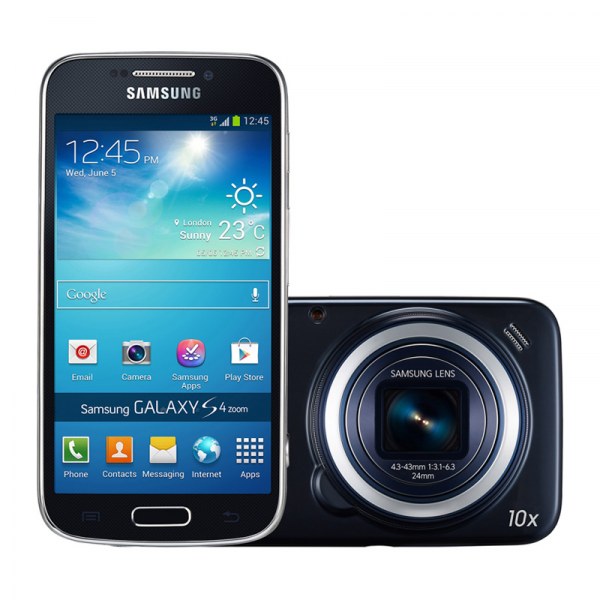
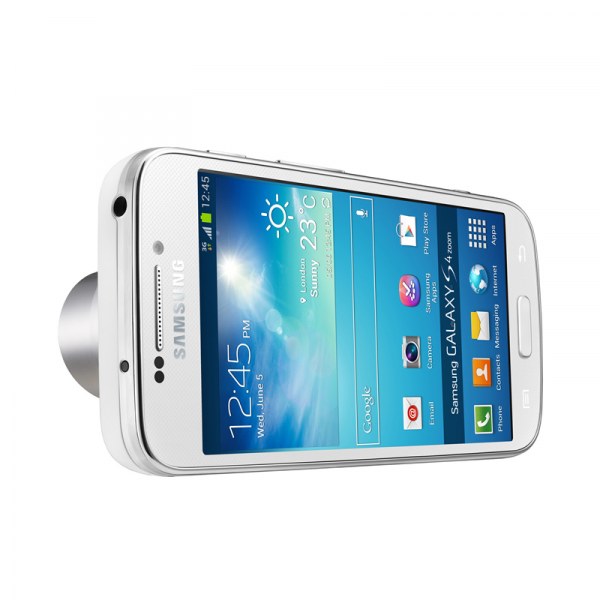
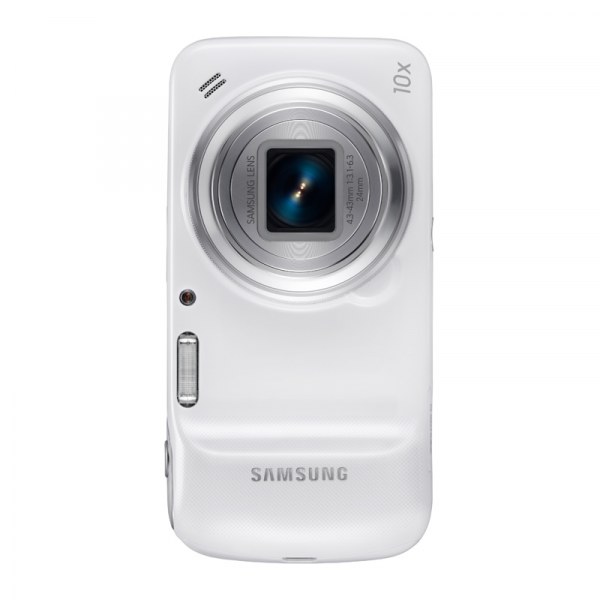
-
Processor: Dual-core 1.5 GHz Cortex-A9
-
RAM: 1.5 GB
-
Storage: 8 GB
-
Display: Super AMOLED, 4.3 inches
-
Camera: 16 mega pixels
-
OS: Android v4.2.2 (Jelly Bean), upgradable to v4.4.2 (KitKat)
Bigger doesn’t always mean better. The small-size/big-performance Samsung Galaxy S4 Zoom is equipped with 10x optical zoom to let you capture clear images and beautiful, accurate color, even from far away. And thanks to the Galaxy S4 zoom’s professional-quality optics and precise zoom-ring adjustment, you can take eye-popping close-ups, too—all without having to lug around heavy camera gear.
Advanced sensor technology makes your pictures come alive. The super-fast, super-sensitive 16-megapixel BSI (back side–illuminated) CMOS sensor needs less light for proper exposure and quicker focus than conventional sensors. So even if a moment happens in the dimmest lighting conditions, your photos will capture everything.
Don’t just share memories; create experiences. In-call Photo Share creates new picture-taking possibilities. Take a shot and send it in a text to a friend—while you’re talking with her on the phone! Zoom-ring control lets you instantly launch the camera app and control photographic functions. The Galaxy S4 zoom isn’t a smartphone with a camera. Part advanced still and video camera, and part Android-powered smartphone, the Galaxy S4 zoom is one device that’s always in touch with your world.
Quick Launch and Shortcut give you instant access to multiple camera modes. Just a quick twist of the Galaxy S4 zoom’s front-mounted zoom ring, followed by a quick touch of the display, lets you dial up different camera modes from: Auto, Gallery, Smart Mode, Manual, Program, and more by with the all-new My mode.
The zoom control re-imagined. Optical zoom control replaces traditional dials and buttons with smooth, easy-to-operate digital controls. Professional-quality accuracy and unprecedented ease of use are just a quick twist of the zoom ring away, making it easy to capture wide-angle shots and create tight-focus effects
Shooting in a hurry doesn’t have to mean shooting blurry. The Samsung Galaxy S4 Zoom’s Optical Image Stabilization (OIS) system gives images crisp focus, even if you’re not perfectly still. Don’t miss a shot worrying about the right conditions. Click with confidence and create photos and video that come out sharp and clear—even in low-light situations, when zooming in for a shot, or while you’re on the move.
Samsung Galaxy S4 Zoom is like a photo tour guide in your pocket. Photo Suggest instantly connects you to huge libraries of images taken by fellow photographers, to help you find and compose your best shots anywhere in the world. Bring more life to your photos—and more photos to your life—with leading social apps and widgets, including TourWrist, Panoramio, TripAdvisor and others.
Samsung Galaxy S4 Zoom - Specs
Network
-
4G Network
-
3G Network
-
2G Network
Design
-
Type Design Type called form factor refers to a mobile phone's size, shape, and style as well as the layout and position of major components of phone. There are three major form factors seen in mobile phones => bar phones, folding phones and sliding phones.Bar
-
Dimensions125.5 x 63.5 x 15.4 mm (4.94 x 2.5 x 0.61 in)
-
Weight208 grams (7.34 oz)
-
ColorsWhite, Dynamic Black
Display
-
Display Type Display Technology => A number of display technologies and types used in mobile phones => TFT (Thin Film Transistor), IPS (In-Place Switching), OLED (Organic Light Emitting Diode), AMOLED (Active-Matrix Organic Light-Emitting Diode), Super AMOLED (an even advanced version of AMOLED), Resistive Touchscreen (Resistive touchscreens contain two layer of conductive material with a very small gap between them which acts as a resistance), Capacitive Touchsceen (Capacitive touchscreen technology consists of a layer of glass coated with a transparent conductor)Super AMOLED
-
Size4.3 inches
-
Resolution540 x 960 pixels
-
Display Colors Display Colors is refers to the number of different shades of colors that the screen is capable of displaying => 64K colors, 256K colors and 16 million colors, Obviously 16M is highest available range of colors and better than others.16M colors
-
Pixel Density Pixel Density (PPI) is refers to the concentration of pixels on a particular display, measured in pixels per inch (ppi). Pixel density is calculated by dividing the diagonal pixel resolution of a display by its diagonal size, higher pixel density better display quality.256 ppi
-
Touch ScreenYes, Multitouch
-
Display Protection Display Protection => Gorilla Glass is a special alkali-aluminosilicate glass shield with exceptional damage resistance that helps protect mobile displays from scratches, drops, and bumps of everyday use, It is always better to go for a smartphone with Gorilla Glass for that added protection and peace of mind.Corning Gorilla Glass 3
-
FeaturesCapacitive touchscreen, Light sensor, Proximity sensor
Software
-
Operating System OS => Every computer system run on a base software called Operating System (OS). Operating System controls all basic operations of the computer (such as smartphone, PDAs, tablet computers and other handheld devices). The Operating System allows the user to install and run third party applications (apps), apps are used to add new functionality to the device.Android v4.2.2 (Jelly Bean), upgradable to v4.4.2 (KitKat)
-
Skin UI or user interface of a device is the look and feel of the on-screen menu system. How it works, its color scheme, how it responds to button presses, all of these things are part of the user interface.TouchWiz
Hardware
-
Chipset Chipset is a group of integrated circuits designed to perform one or a more dedicated functions, often with real time computing constraints, Popular smartphones are equipped with more advanced embedded chipsets that can do many different tasks depending on their programming.Pega-Dual +XMM6262
-
CPU CPU (Central Processing Unit) mostly known as processors, CPU processes instructions in order to carry out certain functions that make your device operate properly. Processors are often described as the brain of computers, smartphones and tablets, Smartphones and tablets rely on processors to carry out their every task, Processors are an incredibly important factor in selecting any type of computing device, including your smartphone.Dual-core 1.5 GHz Cortex-A9
-
GPU GPU (Graphics Processing Unit) is a single-chip processor designed to rapidly manipulate and alter memory to accelerate the creation of images in a frame buffer intended for output to a display, This includes things such as lighting effects, object transformations, and 3D motion.Mali-400
-
RAM (Memory) RAM (Random Access Memory) is a type of computer memory that can be accessed randomly, any byte of memory can be accessed without touching the preceding bytes that allows information to be stored and accessed quickly from random locations. RAM is the most common type of memory found in computer systems, smartphones, tablets and other electronic devices.1.5 GB
-
Internal Storage Internal Storage is a data storage space (flash memory) mostly used in smartphones, tablets and other electronic devices where operating system, apps, music, photos, videos, files and other user data Is stored.8 GB
-
Card Slot Memory Card Slot is a special slot for inserting a memory card. Memory cards allow you to expand the phone's built-in memory, A memory card (sometimes called a flash memory card or a storage card) is a small storage medium used to store data such as text, pictures, audio, and video, for use on small, portable or remote computing devices such as mobile phones, mp3 players, digital cameras.Yes, microSD, up to 64 GB
-
Sensors Sensors are electronic components that detects and responds to some type of input from the physical environment. The specific input could be light, heat, motion, moisture, pressure and location, The output is generally a signal that is converted to use in computing systems, a location sensor, such as a GPS receiver is able to detect current location of your electronic device.Accelerometer, gyro, proximity, compass
Camera
-
Primary Camera is able to capture photographs and usually videos, The most important characteristics of a camera are the resolution (measured in megapixels), lens focus type (fixed or automatic), higher megapixel cameras are known to capture higher quality photos, but not always a good measurement of the photos quality.16 mega pixels
-
VideoYes, 1080p@30fps, optical stabilization
-
Camera FeaturesAutofocus, 10x optical zoom (24-240mm), optical image stabilization, geo-tagging, touch focus, face and smile detection, HDR, panorama
Battery
-
Battery Type Battery Type => Cell phones run on various kinds of batteries depending on the manufacturer, phone size or shape and features. There are basically four types of cell phone batteries => Lithium Polymer, Lithium Ion, Nickel Metal Hydride and Nickel Cadmium.Li-Ion (Lithium Ion)
-
Capacity Battery Capacity is a measure (typically in Amp-hr) of the charge stored by the battery, and is determined by the mass of active material contained in the battery. The battery capacity represents the maximum amount of energy that can be extracted from the battery under certain conditions.2330 mAh
-
Standby Standby Time is the total amount of time that you can leave your is fully charged, turned on and ready to send and receive calls or data transmissions before completely discharging the battery.Up to 570 hrs
Connectivity
-
Bluetooth Bluetooth is a wireless communications technology for exchanging data between mobile phones, headsets, computers and other network devices over short distances without wires, Bluetooth technology was primarily designed to support simple wireless networking of personal consumer devices.Yes, v4.0 with A2DP, EDR, LE
-
Wi-fi Wi-Fi is a popular wireless networking technology using radio waves to provide high-speed network connections that allows devices to communicate without cords or cables, Wi-Fi is increasingly becoming the preferred mode of internet connectivity all over the world.Wi-Fi 802.11 a/b/g/n/ac, dual-band, DLNA, Wi-Fi Direct
-
Infrared Infrared connectivity is an old wireless technology used to connect two electronic devices. It uses a beam of infrared light to transmit information and so requires direct line of sight and operates only at close range.
-
USBmicroUSB v2.0 (MHL), USB On-the-go
-
GPS GPS The Global Positioning System is a satellite-based radio navigation system, GPS permits users to determine their position, velocity and the time 24 hours a day, in all weather, anywhere in the world, In order to locate your position, your device or GPS receiver must have a clear view of the sky.Yes, with A-GPS support and GLONASS
-
NFC NFC (Near field communication) is a set of standards for smartphones and similar devices to establish peer-to-peer radio communications with each other by touching them together or bringing them into proximity, usually no more than a few inches.
-
Headphone Jack

